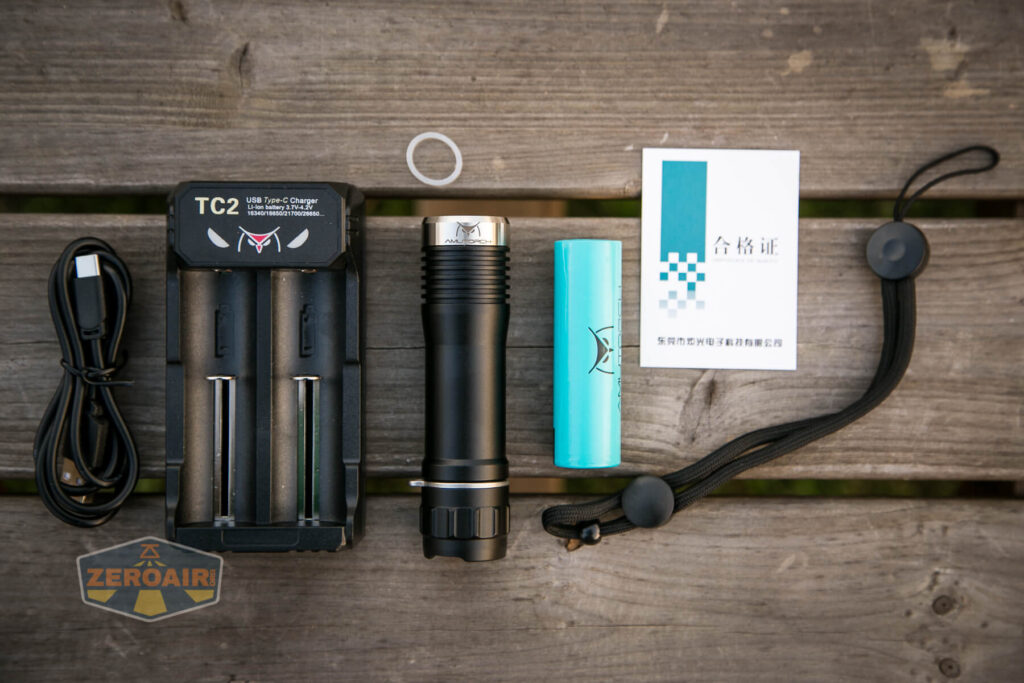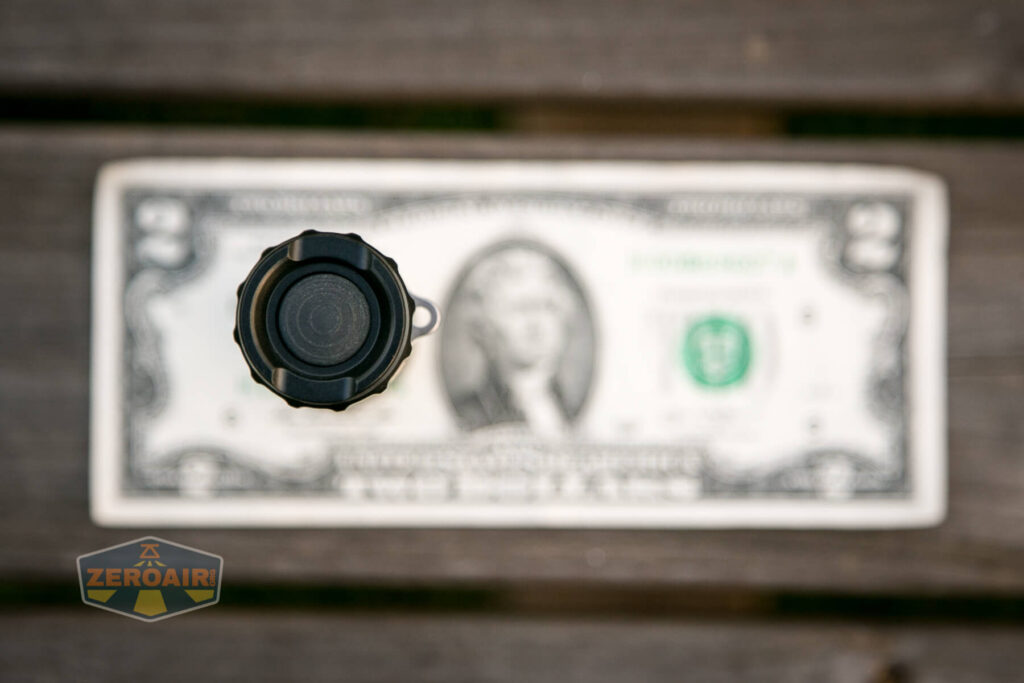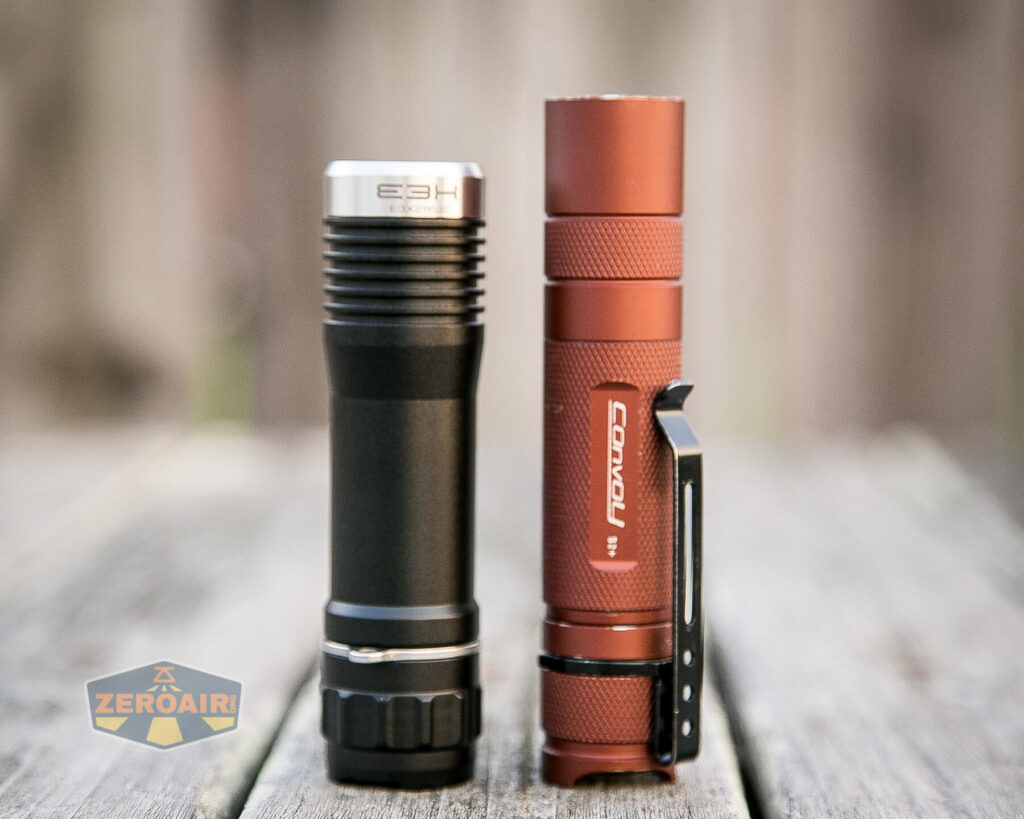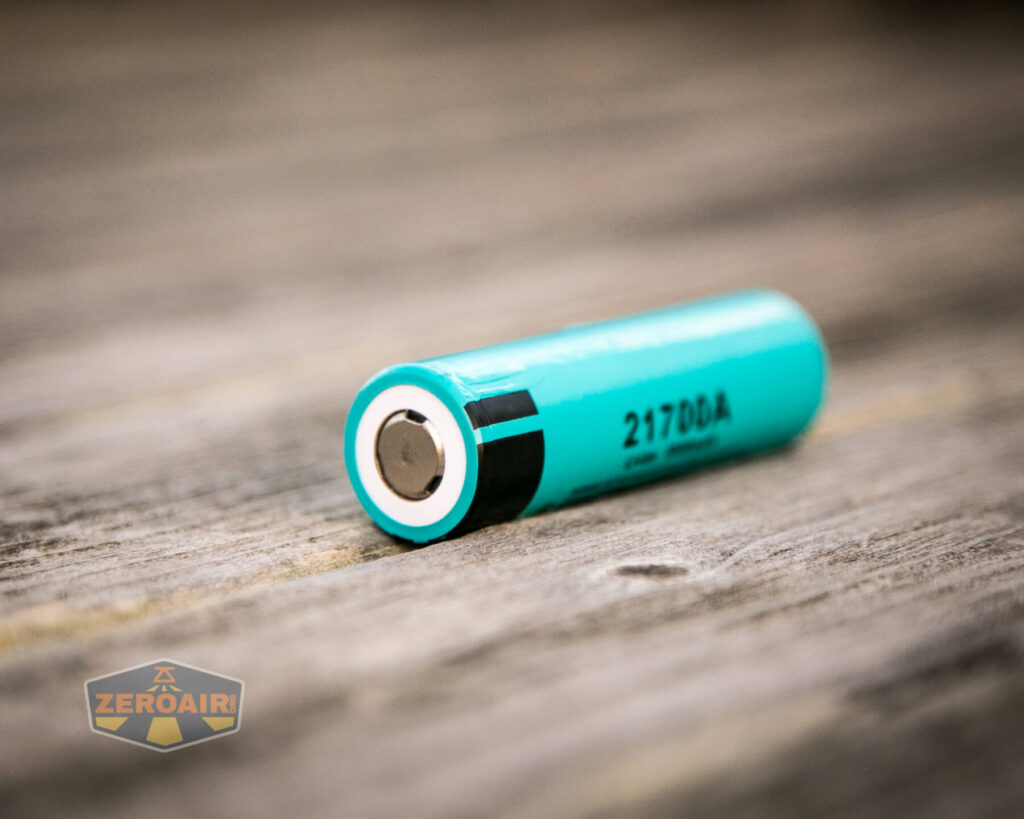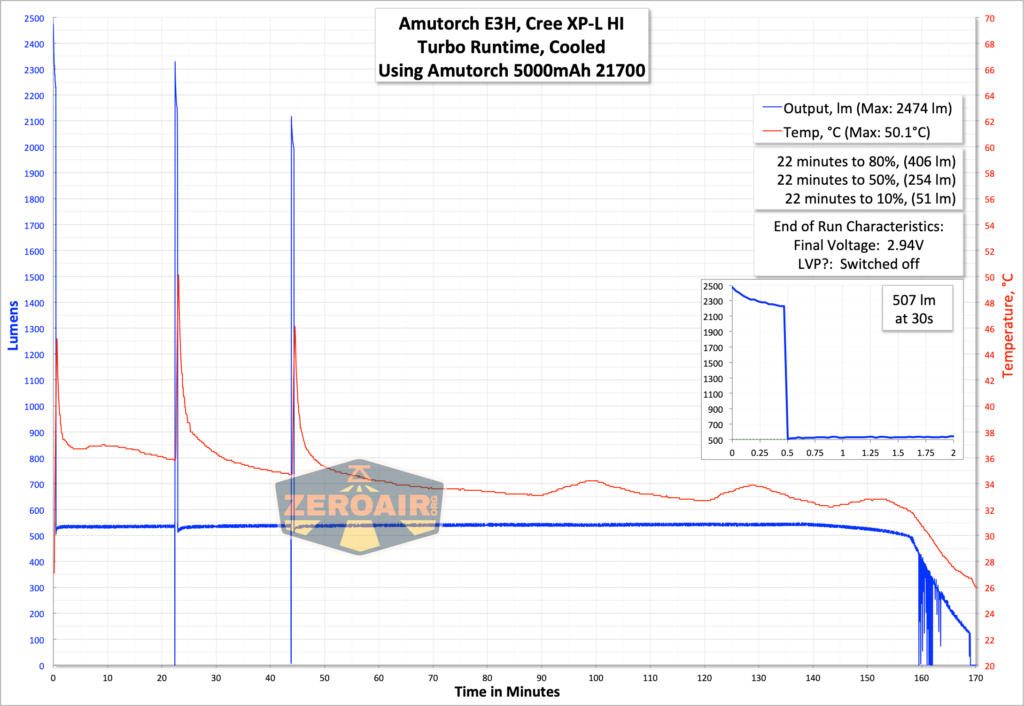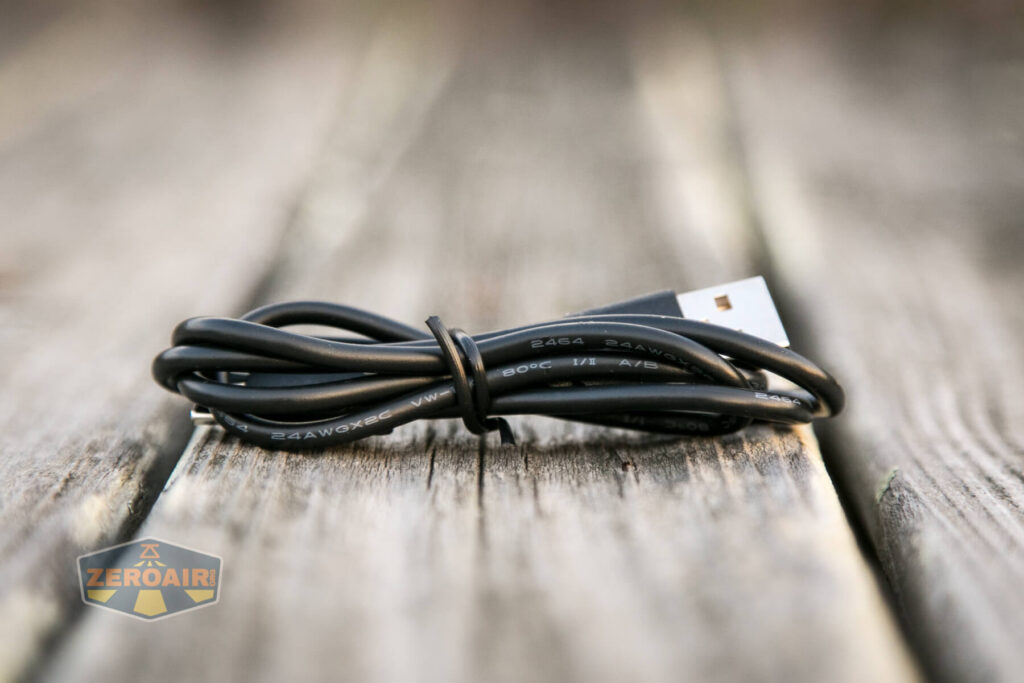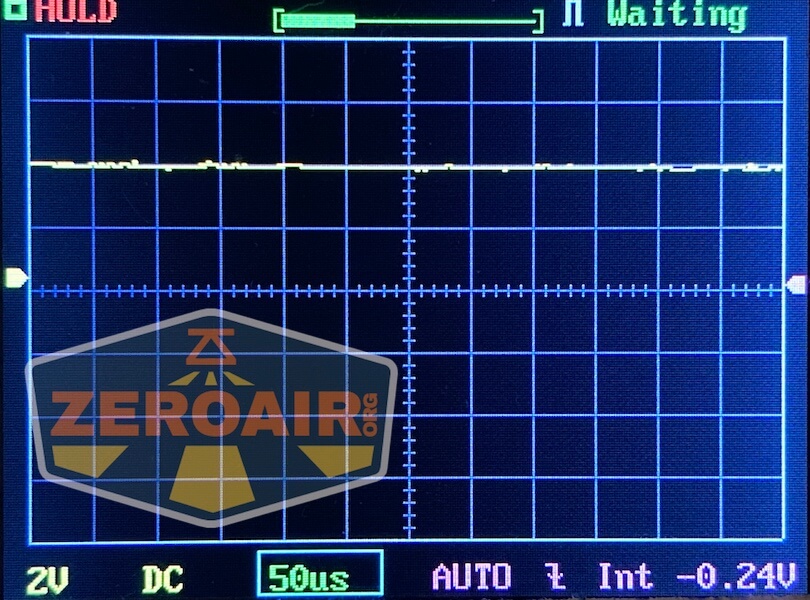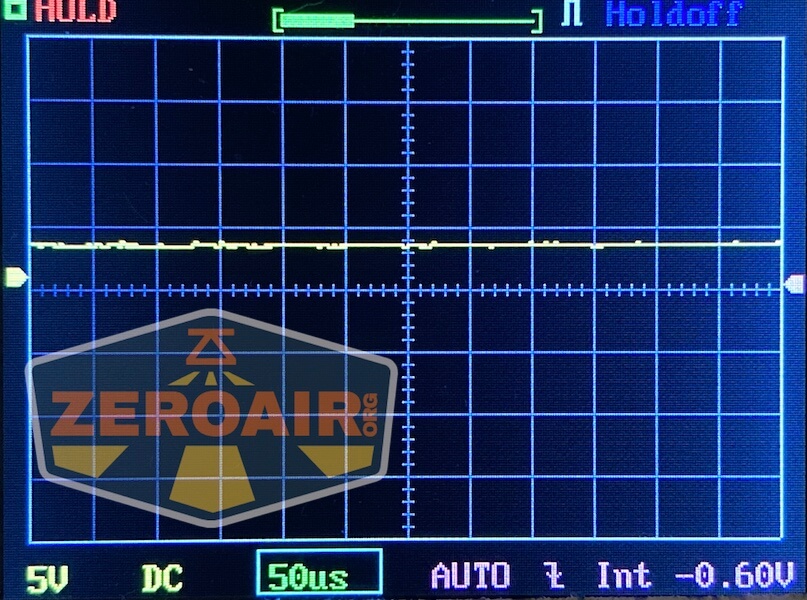Amutorch E3H Flashlight Review
Another Amutorch in my hands – this time it’s the Amutorch E3H flashlight. This light claims 3000 lumens and uses Cree XP-L HI emitters. Read on!
Official Specs and Features
Here’s a link to the Amutorch E3H flashlight product page.
Versions
There’s just one Amutorch E3H flashlight. But in general, there are quite a few versions of the E3 series. Even the E4 could be reasonably considered part of this series. For example, the E3S and E3 are similar, and the E3Q is even more similar.
Price
As seen in this review, the price is $62.45. This includes the 21700 cell and a 2-bay charger.
Short Review of the Amutorch E3H Flashlight
As far as 21700 EDC-type lights go, this one is fairly slim. I appreciate that. I do wish a 5000K or 4000K Cree XP-L HI was offered, as 6500K is too cool. Also, there’s no pocket clip! That’s a downside for me personally. There are two more things I don’t care for. The first is the dramatic timed stepdown, and the bad mode spacing. It sounds like I don’t like the E3H, but as a host, it’s quite nice!
Long Review
The Big Table
| Amutorch E3H Flashlight | |
|---|---|
| Emitter: | Cree XP-L HI (6500K) |
| Price in USD at publication time: | $62.45 |
| Cell: | 1×21700 |
| Turbo Runtime Graph | High Runtime Graph |
| LVP? | Yes, with warning |
| Switch Type: | Mechanical |
| On-Board Charging? | Yes |
| Charge Port Type: | 2-bay USB_C charger |
| Charge Graph | |
| Power off Charge Port | – |
| Claimed Lumens (lm) | 3000 |
| Measured Lumens (at 30s) | 507 (16.9% of claim)^ (after a stepdown from >2400 lumens) |
| Candela per Lumen | 4.7 |
| Claimed Throw (m) | 253 |
| Candela (Calculated) in cd (at 30s) | 858lux @ 3.708m = 11797cd |
| Throw (Calculated) (m) | 217.2 (85.8% of claim)^ |
| All my Amutorch reviews! | |
^ Measurement disclaimer: Testing flashlights is my hobby. I use hobbyist-level equipment for testing, including some I made myself. Try not to get buried in the details of manufacturer specifications versus measurements recorded here; A certain amount of difference (say, 10 or 15%) is perfectly reasonable.
What’s Included
- Amutorch E3H Flashlight
- Amutorch 5000mAh 21700 (with kit)
- Lanyard
- Spare o-ring
- Charger (with kit)
- Charger cable (USB to USB-C) (with kit)
Package and Manual
The box is unlabeled – no “E3H” anywhere on here that I can find.
One thing that annoyed me about these Amutorches is this sticker, seen below.
Now, I don’t mind what the sticker says at all – I get it. National pride for build or whatever (or maybe it’s a law?)
What bothers me is that this sticker doesn’t remove cleanly without very deliberate effort.
The residue does wipe off cleanly, though.
There is no manual.
Build Quality and Disassembly
Overall the build quality here is fairly good. The light feels great in hand, for whatever that’s worth. The anodizing isn’t quite typical – there’s just a bit of texture to it somehow.
Aside from the nub on the lanyard loop (which rotates freely), there isn’t any “sidedness” to the light. The sides are all the same except for the printing on the bezel. The bezel feels like stainless steel.
Here’s the top-down view!
You’ll need to remove the tailcap for cell swaps, and the ribs here help with that. Despite having an “anodized thread” sound, they’re very easy to use.
Again, I’m pretty sure this bezel is stainless. It’s flush; no flutes or anything.
As you can see, the head has quite a bit of cooling fins, though they’re only moderate depth.

The texture in the anodizing is fine and actually great, except when it comes to the threads. They’re just a bit rough, but not in a way that makes them feel untrustworthy.
Inside these parts are springs – a real spring on the tail end, and a faux spring on the head. While this is fine, I think many or most companies would use a brass button here. But these faux springs seem to be Amutorch’s thing. Anyway, it works fine, and as I said above – you should be buying the “with cell” package anyway, so you shouldn’t be needing a spring here for shorter cell support.
Size and Comps
Dimensions: 106mm long x 28mm head diameter x 25.4mm body diameter
Weight: 73g
If the flashlight will headstand, I’ll show it here (usually the third photo). If the flashlight will tailstand, I’ll show that here, too (usually the fourth photo).
Here’s the test light with the venerable Convoy S2+. Mine’s a custom “baked” edition Nichia 219b triple. A very nice 18650 light.
And here’s the light beside my custom engraved TorchLAB BOSS 35, an 18350 light. I reviewed the aluminum version of that light in both 35 and 70 formats.
Retention and Carry
The only thing included for carry of the Amutorch E3H flashlight is the lanyard, which attaches only on this freely-rotating lanyard loop on the tail end.
Even with the tailcap fully tightened, this ring rotates easily. That’s either good or bad, depending – but since there’s no other landmark on the body, there really doesn’t seem to be anything bad about the lanyard rotating freely. It’s not going to catch on a pocket clip, or whatever, for example.
The downside of that, of course, is that there is no pocket clip. Also no pocket clip option, and really nowhere to even attach an aftermarket pocket clip. It’s a lanyard or nothing.
Power and Runtime
Amutorch provides in the kit what you’ll need for powering the Amutorch E3H flashlight. It’s a lithium-ion cell, size 21700.
This is a standard flat-top 21700 cell.
The cell goes into the light in the usual orientation – positive end toward the head.
Here are a couple of runtime graphs. Amutorch states the turbo output to have a 30-second duration, so we’ll call it a “timed stepdown.” But in my test, this high output didn’t last 30 seconds. As a result, I read this as a “507 lumen light” on Turbo, despite the initial output being nearly 2500 lumens. 2500 lumens is around 83% of the claim.
In the graph above, I did reset the light to turbo a couple of times. You can see toward the end of all these runs that the main emitters are flashing a low voltage warning before finally shutting off, too.
One of the things I like very little about this light is the mode spacing. I immediately set my light to Group 5, which has 4 modes (plus turbo) and I have to say there’s really no reason to do so. High and Medium are so close in output that it’s hard to even tell them apart. These runtimes look good though, with flat output for the duration.
Charging
Included with the package (if you buy the package) is this 2-bay charger.
This is just a random thought about the charger, but I really like the desk presence of this charger. It sits very comfortably, and just overall seems nice. And it’s USB-C!
There’s a very clever bit of branding here, too – the owl logo of Amutorch…. see those white blobs beside the logo? Those are the charge indicators! So when the bays are filled (and the device is plugged in), they’re either red (charging) or green (charged). Pretty clever.
This charger is only for lithium-ion cells – no NiMH, for example. That’s a bit of a downer.
Amutorch includes a charge cable with the kit – USB to USB-C.
Charging is certainly slower than the 5000mAh 21700 cell can handle, but overall 1A is not too bad of a generic charge current. I will say that the “CV” phase of this charge cycle just goes on and on and on – In the graph below you can see at around 5 hours, the charge current is around 0.05A or whatever – at this point, the cell is almost certainly “nearly full” or even “full enough.” Maybe hovering around 4.18V or whatever. The additional time might add additional mAh.
The charger does work C to C, but it’s still 5V input.
Modes and Currents
| Mode | Mode Claimed Output (lm) | Claimed Runtime | Measured Lumens | Tailcap Amps |
|---|---|---|---|---|
| Turbo | 3000/700 | 30s/180m | 507 | 6.20 |
| High | 700 | 3h30m | 554 | 1.40 |
| Mid | 350 | 7h | 272 | 0.65 |
| Low | 150 | ? | 140 | 0.33 |
| No name? Eco? Moonlight? | 30 | 100h | 20 | 0.05 |
Pulse Width Modulation
No PWM on any mode.
Here you can see a “baseline” – a chart with almost no light hitting the sensor.
Then there’s the Ultrafire WF-602C flashlight, which has some of the worst PWM I’ve seen. It’s so bad that I used a post about it to explain PWM! Here are multiple timescales (10ms, 5ms, 2ms, 1ms, 0.5ms, 0.2ms) to make comparing this “worst” PWM light to the test light easier. That post also explains why I didn’t test the WF-602C at the usual 50us scale.
User Interface and Operation
The Amutorch E3H flashlight uses a mechanical tail switch. In this case, it’s a reverse clicky. The switch is very clicky, with positive action.
There’s an unusual delay between the switch being fully clicked and actuation. The switch seems to need to be fully in its rest state before the action happens. That’s unusual in that you’re probably accustomed to being able to keep on the switch just a little while switching modes or whatever. Not so, here.
Here’s a user interface table! Spoiler, this is just like Amutorch E4 Brass I reviewed recently.
| State | Action | Result |
|---|---|---|
| Off | Click | On (Mode Memory) |
| On | Click | Off |
| On | Tap | Mode Advance |
| On | Tap 5x | Group select (light blinks 1x, then 2x, 3x, 4x, 5x – click after the desired group)τ |
| On | Double Tap | Turbo |
| On | Tap 3x | Strobe |
| Strobe | Tap | Previous mode |
τ The groups are as follows:
Group 1: 700lm
Group 2: 30lm-700lm
Group 3: 350lm-850lm
Group 4: 30lm-350lm-700lm
Group 5: 30lm-150lm-350lm-700lm
LED and Beam
Amutorch put three Cree XP-L HI emitters in the E3H flashlight. This is a triple emitter light, and has an optic.
I don’t think Amutorch has stated it anywhere, but this looks to me to be the “narrow” version of a Carclo optic. That suits me very well.
There are no flutes or features on the bezel, so no light escapes when headstanding.
These beamshots always have the following settings: f8, ISO100, 0.3s shutter, and manual 5000K exposure. These photos are taken at floor level, and the beam hits the ceiling around 9 feet away.
Tint vs BLF-348 (KillzoneFlashlights.com 219b version) (affiliate link)
I keep the test flashlight on the left and the BLF-348 reference flashlight on the right.
I compare everything to the KillzoneFlashlights.com 219b BLF-348 because it’s inexpensive and has the best tint!
Conclusion
What I like
- Nice build size and shape
- Complete package
- Neat little USB-C charger (with the kit)
What I don’t like
- 6500K (and no warmer option is available)
- Reverse clicky seems to be a bit…. slow.
- Mode spacing is not ideal in the least. I need a 1000 lumen high on this light.
- No pocket clip!
Notes
- This light was provided by Amutorch for review. I was not paid to write this review.
- This content originally appeared at zeroair.org. Please visit there for the best experience!
- For flashlight-related patches, stickers, and gear, head over to PhotonPhreaks.com!
- Please use my amazon.com referral link to help support zeroair.org!
- Please support me on Patreon! I deeply appreciate your support!



